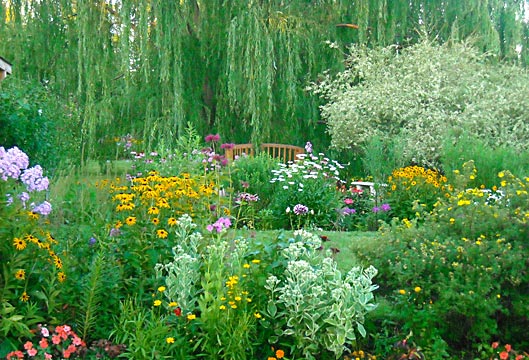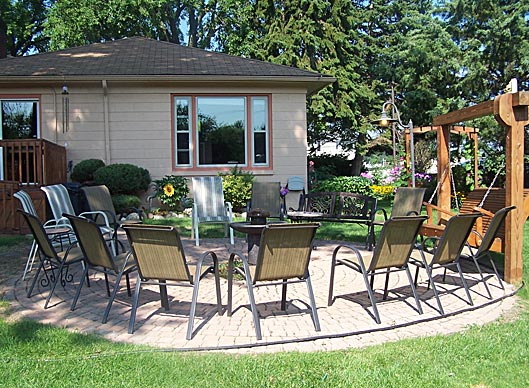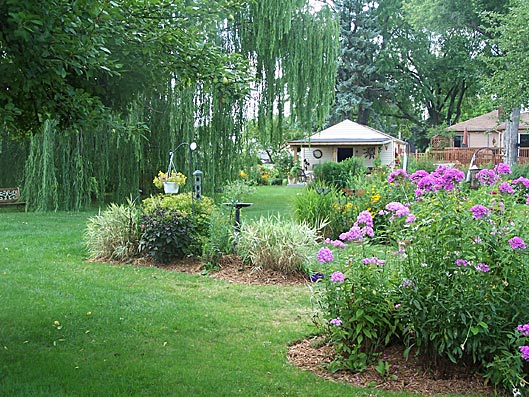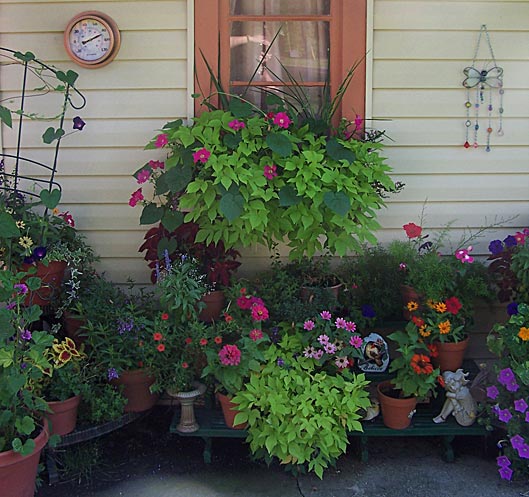 Sandie Parrott
Sandie Parrott
This is Mary’s favorite view of the garden. The willow started out as just a twig when planted in 1998. Her brother-in-law built the bridge to make it easy for her to get across the ditch with her wheelchair. “The dappled willow on the right (Salix integra ‘Hakuro-nishiki’) is beautiful in spring covered in white and pink,” Lockhart said.
 Sandie Parrott
Sandie Parrott
Many groups visit and linger in this circle of chairs surrounding a large fountain.
 Sandie Parrott
Sandie Parrott
Long, narrow flower beds dot the landscape facing back toward the house, while framed by the giant willow.
 Mary has over 50 pots filled with annuals. “I love the light green color of the sweet potato vine, but it is a pain because it needs water daily,” said Lockhart.
Mary has over 50 pots filled with annuals. “I love the light green color of the sweet potato vine, but it is a pain because it needs water daily,” said Lockhart.
